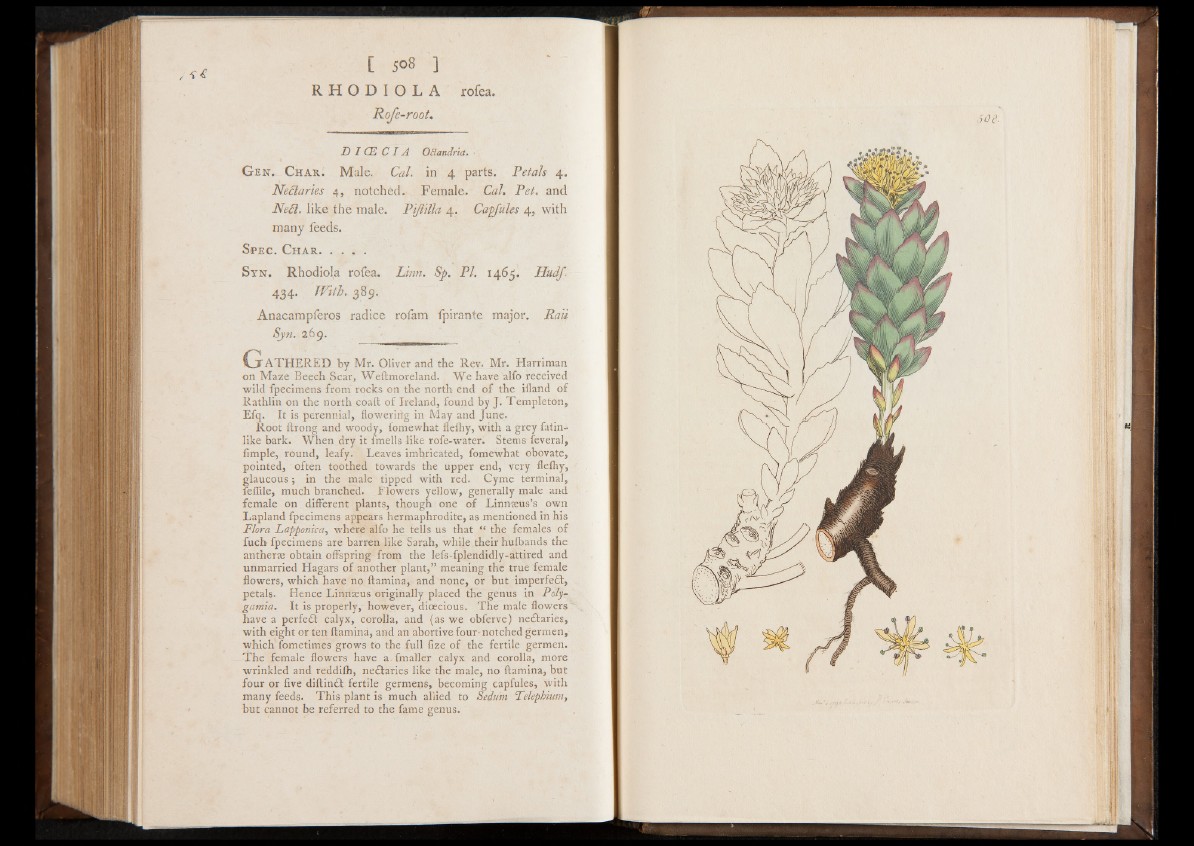
R H O D I O L A rofea.
Rofe-root.
D ICE C I A Oclandria.
G en. Char. Male. Cal. in 4 parts. Petals 4.
Nectaries 4, notched. Female. Cal. Pet. and
Ned. like the male. Pijtilla 4. Capfules 4, with
many feeds.
Spec. Char..............
Syn. Rhodiola rofea. Linn. Sp. PI. 1465. Hudf.
434. With. 389.
Anacampferos radice rofam fpirante major. Rail
Syn. 269.
G a i TIERED by Mr. Oliver and the Rev. Mr. Harriman
on Maze Beech Scar, Weflmoreland. We have alfo received
wild fpecimens from rocks on the north end of the ifland of
Rathlin on the north coaft of Ireland, found by J. Templeton,
Efq. It is perennial, floweriiig in May and June.
Root flrong and woody, fomewhat flefhy, with a grey fatinlike
bark. When dry it fmells like rofe-water. Stems feveral,
fimple, round, leafy. Leaves imhricated, fomewhat obovate,
pointed, often toothed towards the upper end, very flelhy,
glaucous; in the male tipped with red. Cyme terminal,
feffile, much branched. Flowers yellow, generally male and
female on different plants, though one of Linnaeus’s own
Lapland fpecimens appears hermaphrodite, as mentioned in his
Flora Lapponica, where alfo he tells us that “ the females of
fucb fpecimens are barren like Sarah, while their hufbands the
antherse obtain offspring from the lefs-fplendidly-attired and
unmarried Hagars of another plant,” meaning the true female
flowers, which have no flamina, and none, or but imperfeft,
petals. Hence Linnaeus originally placed the genus in Poly-
gamia. It is properly, however, dioecious. The male flowers
have a perfect calyx, corolla, and (as we obferve) nedtaries,
with eight or ten flamina, and an abortive four-notched germen,
which fometimes grows to the full fize of the fertile germen.
The female flowers have a. fmaller calyx and corolla, more
wrinkled and reddifh, nedlaries like the male, no flamina, but
four or five diflindl fertile germens, becoming capfules, with
many feeds. This plant is much allied to Sedum Felephium,
but cannot be referred to the fame genus.